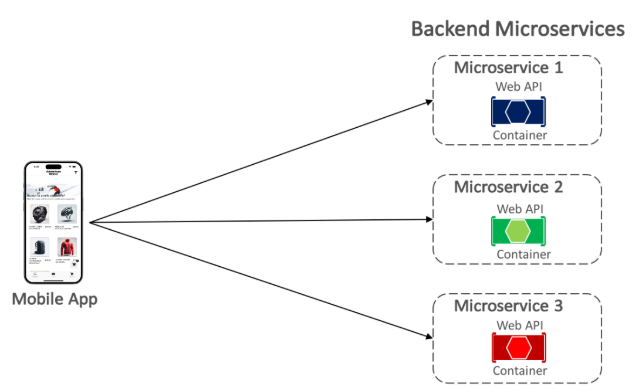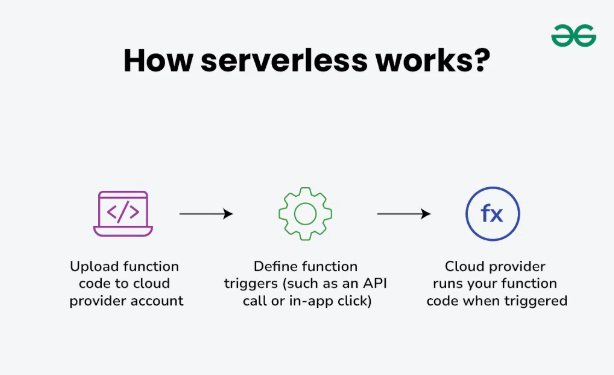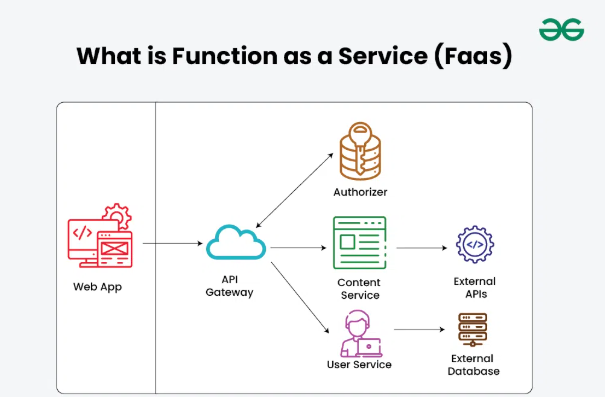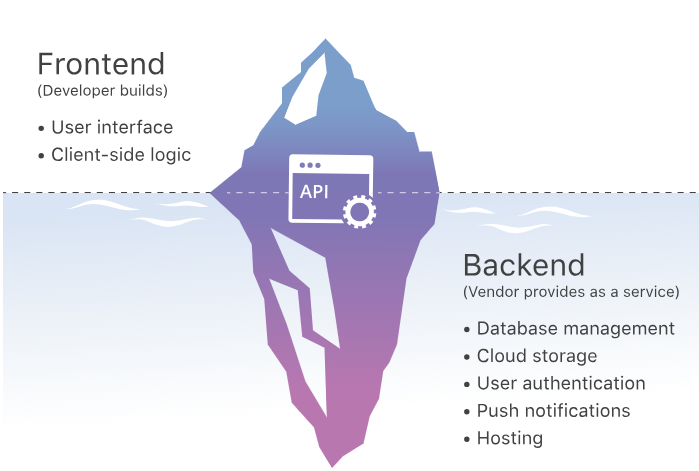
When kicking off a new project or expanding an existing system, one of the key decisions to make is: Which architecture best fits my application, containerized microservices or serverless?
Containerized microservices offer speed, consistency, and efficient resource usage. In contrast, serverless architectures excel in rapid deployment, built-in scalability, and greater flexibility. In this article, we’ll dive into the strengths and trade-offs of both approaches, helping you choose the right foundation for your modern application.
What are containerized microservices?
Containerized microservices represent an architectural approach in which applications are decomposed into small, independently deployable services. Each microservice is responsible for a specific business capability and is packaged within its own container. This packaging ensures that each service operates in a self-contained environment, allowing for consistent execution across various deployment platforms.
The microservices model emphasizes modularity by designing each service to perform a distinct function. Encapsulation within containers provides process and environment isolation, which enhances portability and simplifies deployment. Because microservices are loosely coupled, they can be developed, deployed, and scaled independently. This horizontal scalability allows individual services to respond dynamically to performance demands without affecting the broader system.

Containerization is a development practice in which an application, along with its dependencies and configuration, is packaged into a container image. This image defines everything required for the application to run, ensuring consistency from development through production. Containers offer lightweight, resource-managed environments that behave similarly to isolated virtual machines, but with significantly less overhead.
The combination of microservices and containerization allows for fine-grained deployment and management. Container orchestration platforms such as Kubernetes further enhance this approach by automating the deployment, scaling, and operation of containerized services. Within Kubernetes, containers are grouped into pods, which act as the smallest deployable units in a cluster. These pods are orchestrated to run efficiently and reliably across distributed environments.
Together, containerization and microservices enable organizations to build scalable, resilient, and maintainable applications that can evolve rapidly in response to changing business and technical requirements.

What Is serverless architecture?
Serverless computing enables developers to build and deploy applications more efficiently by abstracting away the complexities of server and infrastructure management. In a serverless model, the cloud provider handles the provisioning, scaling, and management of the infrastructure needed to run code, allowing developers to focus solely on writing application logic.

There are two primary serverless architecture models:
- Function-as-a-Service (FaaS): FaaS allows developers to run individual functions or small code snippets in response to specific events, such as HTTP requests, file uploads, or database updates. Popular FaaS platforms include AWS Lambda, Azure Functions, and Google Cloud Functions. These platforms provide scalable, event-driven environments that execute code in a highly efficient manner.

- Backend-as-a-Service (BaaS): BaaS provides ready-to-use backend services, such as databases, authentication, and storage, which developers can integrate into their applications. Well-known BaaS platforms include Firebase, AWS Amplify, and Backendless. These services offer tools for building real-time databases, managing user authentication, storing files in the cloud, and handling API management.

By leveraging serverless architecture, organizations can accelerate development timelines, improve scalability, and reduce operational costs, all while focusing on core application functionality.
Why compare these architectectures?
Microservices and serverless architectures represent two distinct approaches to addressing similar challenges in software development, including scalability, agility, and cloud-native innovation. Rather than determining one as superior to the other, comparing these two models provides valuable insights into their respective strengths, weaknesses, and optimal use cases. Understanding each approach allows organizations to select the most suitable architecture based on their specific requirements, goals, and resources.
Core concepts
Containerized Microservices
Containerized microservices involve the modularization of applications into discrete services, each packaged with its own runtime. This approach ensures isolation, portability, and consistency across diverse environments. Containers are typically managed by orchestration platforms like Kubernetes, which handles scaling by adjusting the number of containers based on demand and ensuring system reliability, even in the face of failures. This enables microservices to maintain their intended state and continue functioning optimally.
Container registries, such as Docker Hub, AWS Elastic Container Registry (ECR), and Azure Container Registry (ACR), serve as repositories for storing and managing container images. These registries allow developers to upload, version, and distribute images to a centralized location, from which orchestration platforms can pull and deploy containers efficiently.
Serverless Computing
Serverless computing is an event-driven model that automatically triggers a function in response to specific events, such as HTTP requests or file uploads. This architecture is designed for creating highly responsive, scalable, and event-driven applications, where functions are executed on-demand.
With serverless computing, infrastructure management is completely handled by the cloud provider, including platform maintenance, scaling, and resource allocation. However, providers often impose restrictions on function memory size and execution time. This model is particularly effective for use cases that require quick, event-driven responses, such as processing API requests, handling Internet of Things (IoT) events, or reacting to database triggers in real-time data streams.
Comparing key features
Containerized Microservices
- Scalability: Offers manual scaling with tools like Kubernetes, giving full control over scaling decisions and resource management.
- Cost: Requires payment for the underlying infrastructure, regardless of whether it is actively in use or idle.
- Development Speed: Development may take longer, particularly for complex applications, as it requires setting up and configuring multiple services and environments.
- Flexibility: Provides complete control over the environment and dependencies, allowing developers to choose any runtime, operating system, or framework.
- State Management: Can manage state both locally or externally, offering flexibility in how application data is stored and accessed.
- Vendor Lock-In Risks: Highly portable across different cloud environments and infrastructures, reducing the risk of vendor lock-in.
Serverless Architecture
- Scalability: Automatically scales based on demand, with the cloud provider adjusting resources dynamically as needed.
- Cost: Only pay for function execution, with no charges incurred during idle times, making it more cost-effective when demand is low.
- Development Speed: Facilitates fast development with minimal setup, as the cloud provider handles infrastructure management.
- Flexibility: Restricted to the environments and tools supported by the cloud provider, which may limit customization but simplifies the development process.
- State Management: Generally stateless, with any required state management handled externally, such as through cloud storage or databases.
- Vendor Lock-In Risks: More prone to vendor lock-in, as applications are closely tied to specific cloud providers, which may complicate migration to other platforms.
Use cases and suitability
Choose Containerized Microservices for:
- Complexity: Well-suited for applications that require custom networking, persistent storage, or highly specialized configurations. The flexibility of containerization makes it ideal for handling complex architectures.
- Performance and Latency: Ideal for applications that demand consistent performance, low latency, and the ability to scale independently. Containerized microservices can be optimized and scaled individually, ensuring high availability and responsiveness.
- Multi-Cloud Environments: Containerized microservices are highly suitable for multi-cloud or hybrid cloud strategies, as they offer portability and can run seamlessly across different cloud platforms. This ensures greater flexibility in deployment, management, and scaling.
Some notable companies utilizing microservices to drive innovation and scale their applications include Spotify, Amazon, eBay, Uber, and Netflix. These companies leverage microservices to enhance system reliability, scalability, and agility in the face of constantly changing business demands.
Choose Serverless for:
- Events Triggered by Application: Ideal for applications that respond to specific events, such as processing real-time notifications, handling file uploads, or reacting to database changes. Serverless is well-suited for event-driven workloads.
- Highly Variable Traffic App: Perfect for applications that experience unpredictable or spiky traffic, as serverless automatically scales based on demand. It eliminates the need for manual intervention, ensuring efficient resource usage even during traffic fluctuations.
- Rapid Speed of Development: Particularly advantageous for startups or teams with limited DevOps expertise. Serverless architecture allows for fast iteration and development, as developers can focus on code without worrying about infrastructure management.
Some well-known companies leveraging serverless architecture to improve scalability and speed of development include Netflix, Airbnb, Amazon, Autodesk, and Slack. These companies utilize serverless to build efficient, scalable applications that respond to variable user demands.
Challenges
Both containerized microservices and serverless architecture have their respective strengths and challenges. It’s essential to evaluate these factors based on the specific use case before making a decision. Below is a summary of the key challenges for each:
Containerized Microservices
- Complex Management:
Managing a microservices architecture requires significant effort, particularly when dealing with multiple services. This includes deploying, monitoring, and ensuring the seamless interaction between services, which can become complex in large-scale systems. - State Management:
Containers are typically stateless, which can create challenges in maintaining application state across various services. This often necessitates the use of external storage or databases, adding complexity to the overall architecture. - Infrastructure Overhead:
Orchestration tools like Kubernetes provide powerful management capabilities but also introduce significant overhead in terms of complexity and resource consumption. Setting up and maintaining these tools can be resource-intensive, especially for smaller teams or businesses without dedicated DevOps expertise.
Serverless Architecture
- Cold Starts:
Serverless functions can experience a delay when they are triggered after a period of inactivity, a phenomenon known as a “cold start.” This can lead to latency issues and degrade performance, particularly for real-time applications that require instant responsiveness. - Vendor Lock-In:
Serverless solutions are tightly coupled with specific cloud providers, making it challenging to migrate to another platform. This dependency can be a risk if the provider changes its pricing model, functionality, or if the company wants to switch cloud vendors in the future. - Limited Control:
Serverless architecture limits the level of control over the runtime environment and infrastructure. Developers must work within the constraints of the cloud provider’s environment, which may restrict flexibility for more specialized use cases or complex configurations.

Future trends in cloud-native development
Containerized microservices and serverless architectures have already played a transformative role in the development and deployment of applications. However, emerging trends are set to drive the next wave of innovation in cloud-native development, aiming for more scalable, efficient, and adaptive applications:
1. Convergence of containers and serverless
Hybrid solutions are likely to blur the lines between containerized microservices and serverless computing. Frameworks like Knative (built on top of Kubernetes) enable developers to run serverless workloads alongside containerized services in a unified environment. This approach allows businesses to leverage the strengths of both paradigms, offering greater flexibility in managing workloads, resource allocation, and scaling.
2. Expansion of serverless and cloud ecosystem
Serverless computing will continue to expand, particularly in specialized domains such as AI and ML workloads, real-time data processing, and edge computing. Cloud providers are working to enhance their serverless offerings with better tools, reduced latency, and improved multi-cloud capabilities. This will make serverless more adaptable to a wider range of use cases, from high-performance computing to IoT and distributed applications.
3. Smarter orchestration
Orchestration tools like Kubernetes will evolve to integrate more intelligent features for managing microservices. Advanced failover mechanisms, resource optimization engines, and automatic scaling will further enhance the performance, reliability, and cost-efficiency of microservices architectures. This shift will help developers focus more on application logic, while the infrastructure handles scaling, fault tolerance, and resource management seamlessly.
The verdict: Containers vs. serverless
Containers offer control, complexity management, and scaling flexibility. Serverless provides speed, cost efficiency, and removes infrastructure concerns. A hybrid approach combines both, offering a balance of flexibility, scalability, and cost-efficiency. Choose the architecture that best fits your application’s unique needs to unlock its full potential.